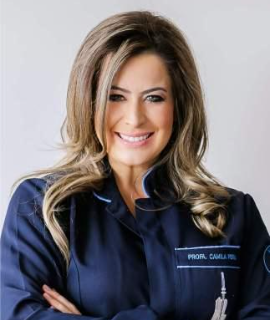Title: Current Leanings in Traumatized Teeth
Abstract:
The significant advances in public health through education and self-care practices have been widely and successfully disseminated worldwide. As regards oral health, promotion and prevention activities have resulted in a drastic reduction of the most prevalent diseases (caries and periodontal disease) in recent decades, with proven epidemiological evidence (Nickel et al., 2008; Narvai et al., 1999, Ministry of Health, 2004). On the other hand, it was verified the growth of another harm in dentistry: traumatic dental injuries (TDIs). By definition, TDIs are characterized as any lesion to the dental organ, of thermal, chemical or physical origin, of varying intensity and severity and whose magnitude exceeds the resistance found in bone and dental tissues. (Baker et al., 1990). It occurs at any stage of tooth development and age and is more common in children and adolescents. The incidence of traumatic dental injuries in the population has increased significantly in recent years (Traebert et al., 2010, Traebert and Claudino, 2012). Some reasons, such as the greater participation of children, adolescents and adults in sports activities, the increase of interpersonal violence in its different nuances (urban, domestic, from different forms of prejudice), motor vehicle accidents (Wulkan et al., 2005), have contributed to the increase of cases of TDIs in the world, transforming the occurrence, into a significant and emerging public health problem.
The traumatic dental injuries, because they differ in type and intensity, should be carefully analyzed in their clinical management (Sanabe et al., 2009), as they affect the individual affected not only with physical but also psychological consequences, negatively impacting quality of life and in interpersonal relationships (Antunes et al., 2012), constituting a social problem of high relevance. Thus, factors such as the severity of trauma, dental development stage, time elapsed from the occurrence of the accident to the care should be considered for the implementation of the appropriate treatment. However, clinical difficulties await new perspectives for the treatment of traumatized teeth. in view of the specified above and with the objective of working with an evidence-based dentistry to improve the population's care, the lecture will have as its object the discussion the TDIs, emphasizing current leading for traumatized teeth. Because it is an eminently clinical topic and one of exciting discussion, it will discuss the latest practices to prevent the occurrence, reduction and/or control of sequelae due to TDIs, from immediate care to the longitudinal preservation of the sequelae, with the primary objective of maximizing the survival of traumatized teeth. Thus, aspects ranging from the correction of malocclusions, indication of adequate buccal protectors, means of preservation and extra-alveolar time for avulsed teeth, will be discussed. Furthermore, new alternatives for the treatment of external resorptions (inflammatory and mainly substitutive), which are sequelae due to severe TDIs and persisting as a treatment challenge in the present days (Consolaro, 2011), will be addressed. Finally, new treatment perspectives for immature traumatized teeth with necrotic pulp, through regenerative endodontics in their different techniques, and intentional non-invasive reimplantation for the indicated cases will be presented.




